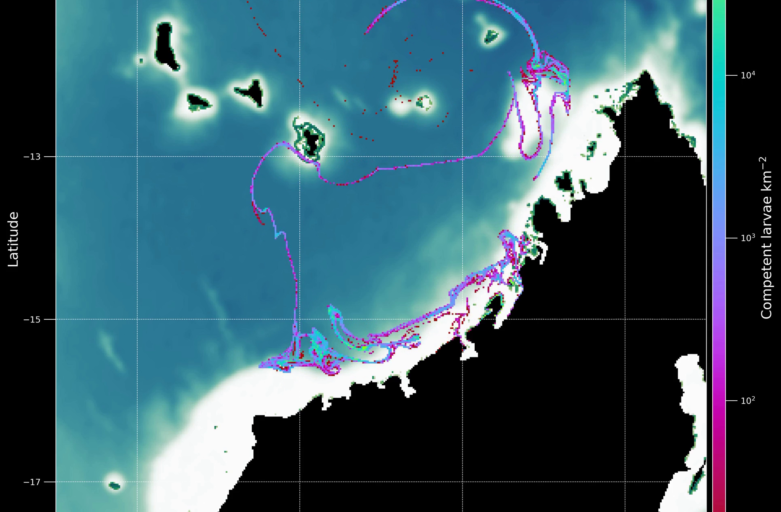Coral larval dispersal establishes connectivity between reefs, but larval fluxes vary over timescales from daily to multidecadal due to oceanographic variability. Using a 2-km-resolution ocean model, we simulate daily spawning events from 1993 to 2019 and assess the potential connectivity between all reefs in the tropical southwest Indian Ocean. Although there is a significant seasonal cycle in potential connectivity, day-to-day variability generally dominates. Larval dispersal pathways on any particular day provide limited information about the dispersal pathways a few days later. The magnitude of this high-frequency variability depends on the local geography and oceanography, with small and isolated reefs generally subject to the most variability. Stochastic oceanographic variability introduces considerable uncertainty to dispersal predictions, imposing fundamental limitations on what simulations can tell us about inter-reef connectivity. Protracted spawning over only a few days can significantly reduce variability associated with the likelihood of a larva settling. The duration of spawning is therefore a more important parameter in modeling coral connectivity than the exact timing of spawning onset. Finally, we find that a small proportion of spawning events account for the majority of settling larvae, particularly at remote islands, and demonstrate that a time-mean picture of dispersal may be inappropriate for predicting demographic and genetic connectivity. Given the diversity of coral reef environments in the southwest Indian Ocean, we expect that these results will apply to inter-reef coral connectivity across the tropics more broadly, as well as other weakly swimming reef taxa with the potential for long-distance dispersal.
